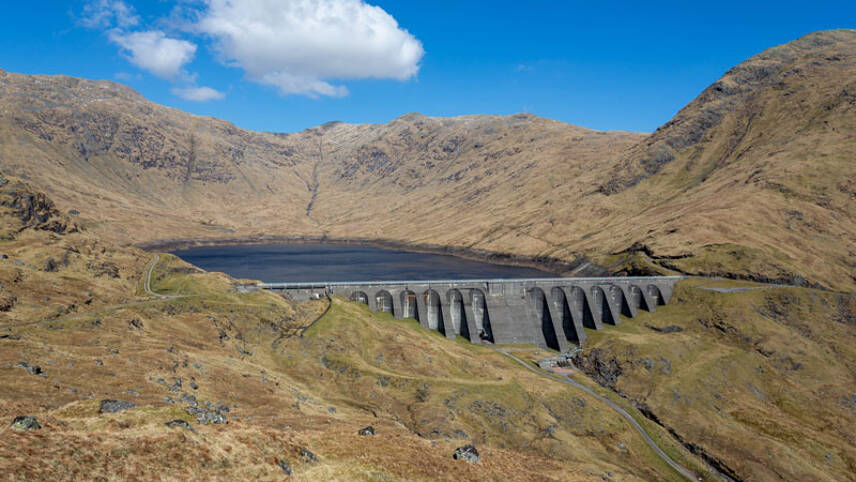Register for free and continue reading
Join our growing army of changemakers and get unlimited access to our premium content

Pictured: The Cruachan pumped hydro Power Station, Scotland. Image: Drax Group
Ministers at the Department for Energy Security and Net-Zero (DESNZ) this week launched a new consultation on unlocking investment in long-duration energy storage (LDES) technologies such as pumped hydro storage.
The Department has noted that historic struggles to deploy LDES at scale, largely due to the cost-benefit of project development under current energy market frameworks, will need to be overcome on the road to net-zero.
This is because energy storage is critical in maintaining energy security and keeping power system operating costs down as more intermittent renewable generation comes online. The UK is notably aiming to scale offshore wind and solar significantly while bringing unabated gas-fired power generation offline by 2035.
At present, Britain hosts just 2.8GW of active LDES capacity across four pumped hydro plants. No new plants have been commissioned in more than three decades.
DESNZ-commissioned research conducted by LCP Delta modelled potential electricity system operating cost savings if up to 20GW of LDES capacity is deployed this decade. It reveals potential savings of £24bn, equivalent to more than 3% of total costs.
The consultancy stated that achieving this level of scale at the necessary pace will require additional investor support over the long term from Westminster.
Consultation specifics
Consultation documents set out DESNZ’s intention to grow this capacity and to diversify the kinds of LDES in operation, bringing online more novel technologies such as compressed air storage, gravity-based storage and flow batteries.
Across these technologies and pumped hydro, some 3GW of LDES capacity is in the pipeline for the UK. The largest single proposal is Drax’s expansion of the Cruachan pumped hydro project in the Scottish Highlands.
The DESNZ documents also outline how the Government intends to develop a cap and floor mechanism, under which investors are guaranteed a minimum level of revenue.
Ministers will take advice from industry experts on the design of this mechanism until 5 March. They will also be basing the design on experience from implementing a similar system for interconnectors that transport power under the sea.
Funding mechanisms for the cap and floor approach include a Contract for Difference (CfD) auction process including a supplier obligation levy, or payments under the existing Transmission Network Use of System charges that apply already to short-duration energy storage projects.
In any case, the mechanism would only be open to storage projects able to supply a minimum of six hours of electricity.
The Association for Renewable Energy and Clean Technology (REA) has welcomed the consultation launch. Its policy director Frank Gordon said: “We need much more of this valuable resource, alongside all forms and durations of energy storage, to make the transition to a net-zero energy system as smooth and cost-effective as possible. It is something we and others have been calling for over a number of years.
“We look forward to discussing the details with the Government and our members and working together on implementation as soon as possible.”


Please login or Register to leave a comment.